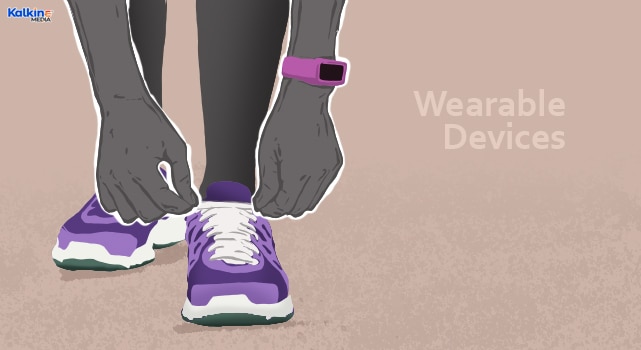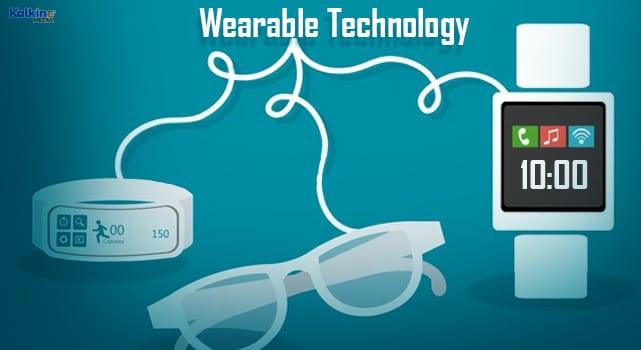PHYSICAL HEALTH
Five ways fitness wearables are revolutionising the healthcare space

WORDS: Mr. Kunal Sawhney , CEO , Kalkine Group PHOTOGRAPHY Supplied - Kalkine Group
Wearable technology has been rapidly transforming the healthcare industry over recent years, with new innovations surfacing time and again. The highly accessible technology has been adopted by healthcare institutions and individuals alike. From maintaining personal health to allowing remote monitoring in hospitals, such technology has been serving multifold purposes.
Though wearable technology has existed for many years, it has only now achieved its due recognition. These monitoring devices have made personal fitness an easier choice for many individuals. With the option to put reminders in many of the modern-day fitness wearables, timely intake of medicines and being regular with workouts has become much easier.
Fitness wearables are a modern-day marvel that offer a much more flexible environment for busy individuals. Additionally, remote tracking of individuals’ activities has been helping to control a massive inflow of patients seen in hospitals. It has been a great support for hospitals to identify critical cases, especially during the pandemic. In a way, fitness trackers and wearables are a gift to the present climate, where health concerns have become rampant.
Here are a few ways in which fitness wearables are reshaping the healthcare industry.
1. Enabling early diagnosis of diseases
Some of the high-functioning wearables offer the option to send data about organ functioning directly to physicians. This allows early diagnosis of critical diseases, which can be crucial in saving patients’ lives. For instance, diabetes patients must keep their blood glucose levels in check, take insulin on time, and track their food intake. All these goals can be achieved through high-tech wearable devices, minimising risks for such patients.
Additionally, with the help of big data, wearable technology can be used to help detect chronic illnesses at a preventable stage. Data gained from other patients can be used to detect patterns that result in a particular ailment, such as a heart attack.
ALSO READ: How can AI, machine learning transform healthcare sector?
1. Making personal fitness a fun-activity
Fitness wearables, like smartwatches, allow users to monitor healthcare quickly and easily without making the process monotonous. Many individuals struggle to make everyday fitness a regular part of their life. Wearable fitness devices offer a comfortable way of adapting to a healthier lifestyle without having to consult dieticians or doctors.
A more conscious approach toward personal fitness can help reduce lifestyle-related diseases and promote a healthier way of living. This can greatly reshape the healthcare industry while reducing the number of healthcare-related diseases.
2. Assisting in medical procedures
The healthcare industry is rapidly changing, with automated procedures becoming increasingly prominent across hospitals. Wearable technology holds the potential to assist surgeons in precise examination during medical procedures.
One such example is smart goggles, which offer a close-up examination of patients undergoing surgery. These glasses can help trainees and medical students get a simulated view of critical procedures used by medical experts. When projected on a bigger screen, the recording from these glasses allows others to see things from the surgeon’s perspective. This wearable technology can be combined with artificial intelligence to deliver a hands-free experience during surgeries.
3. Increasing life expectancy
Higher life expectancy is usually considered a sign of good health condition of a person. With wearable technology, individuals can receive important signals about their health and gain awareness about the potential diseases they should get checked for.
Thus, people opting for wearable technology seem to be better positioned to avoid chronic diseases and critical conditions. However, it is equally important to not completely rely on these devices and consult medical practitioners as and when needed.
4. Revolutionising doctor-patient interaction
With wearable technology, there may soon be a time when individuals are able to send their medical information to doctors without any face-to-face interaction. The biggest advantage of wearable technology is that it offers a chance to keep track of data over time. This collected data can be used as a database for research and monitoring.
Patients can simply send their data feed to the doctor for examination. This can expedite the checkup process and shape a smoother path towards the necessary solution. Doctors can then quickly respond to incoming data and provide appropriate treatment or procedures for each patient.
ALSO READ: Can Australia’s new Labor govt heal the cracks within healthcare system?
The wearable fitness space is witnessing a dynamic transformation and increased usage in the medical industry. The biggest example of their prevalence is smart watches, which have allowed users to take control of their personal fitness. Regulatory bodies have also shown acceptance for these technologies and are promoting them as an easy-to-use accessories to promote a healthier lifestyle.
Over time, these devices are expected to become more affordable, as is the case with most technological revolutions. Some of the key wearable devices gaining popularity in the present era include immersive helmets, smart glasses, smart clothes, skin patches, arm and wrist-worn trackers and even implantable sensors. The data collected from these devices can be easily transmitted to smartphones and computers for efficient usage. In time, wearable technology could pave the way for the future where preventive healthcare supersedes reactive healthcare.











